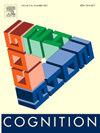超越自顶向下:特征搜索是一个连续的聚类过程
IF 2.8
1区 心理学
Q1 PSYCHOLOGY, EXPERIMENTAL
引用次数: 0
摘要
物理显著刺激是否会自动捕获注意力,独立于观察者的目标,或者注意力捕获是否取决于刺激和观察者的任务集之间的匹配,这是一个长期存在的争论。最近的证据表明,当观察者采用所谓的特征搜索模式时,可以阻止注意力捕获,这种模式可以自上而下地抑制显著但不相关的刺激。本研究考察了特征搜索模式是否反映了真正的自上而下的控制,或者它是否仅仅是由特定显示特征引起的连续、集群搜索的结果。为了研究这一点,我们采用了双目标相容性操作。我们的研究结果表明,在特征搜索模式下,几乎不存在兼容性效应,这表明集群顺序搜索导致显著分心物没有捕获注意。相比之下,当被试处于单个干扰物检测模式时,显著的单个干扰物具有较大的兼容性效应,同时具有较强的注意捕获。目前的结果挑战了自上而下的抑制阻止注意力捕获的观念。相反,他们支持这样一种解释,即在特征搜索中,捕获的缺失源于显示器结构所决定的串行搜索的固有约束性质。因此,我们的研究结果对搜索模式作为不同认知状态的功能相关性提出了质疑,并主张在注意窗口大小和显示配置的基础上重新解释。本文章由计算机程序翻译,如有差异,请以英文原文为准。
Beyond top-down: Feature search as a serial clump-wise process
There has been a long-standing debate over whether physically salient stimuli capture attention automatically, independent of the observer's goals, or whether attentional capture depends on the match between the stimulus and the observer's task set. Recent evidence indicates that attentional capture can be prevented when observers adopt a so-called feature search mode, which enables top-down suppression of salient but irrelevant stimuli. The present study examined whether the feature search mode reflects genuine top-down control or whether it simply results from serial, clump-wise search induced by specific display characteristics. To investigate this, we employed a two-target compatibility manipulation. Our findings reveal that in feature search mode, there were almost no compatibility effects, indicating clump-wise serial search which in turn resulted in no attentional capture by the salient distractor. In contrast, when participants engaged in singleton detection mode, there were large compatibility effects and at the same time strong attentional capture by the salient singleton distractor. The current results challenge the notion that top-down suppression prevents attentional capture. Instead, they support the interpretation that, in feature search, the absence of capture arises from the inherently constrained nature of serial search dictated by the display's structure. Consequently, our findings call into question the functional relevance of search modes as distinct cognitive states and advocate for a reinterpretation grounded in attentional window size and display configuration.
求助全文
通过发布文献求助,成功后即可免费获取论文全文。
去求助
来源期刊

Cognition
PSYCHOLOGY, EXPERIMENTAL-
CiteScore
6.40
自引率
5.90%
发文量
283
期刊介绍:
Cognition is an international journal that publishes theoretical and experimental papers on the study of the mind. It covers a wide variety of subjects concerning all the different aspects of cognition, ranging from biological and experimental studies to formal analysis. Contributions from the fields of psychology, neuroscience, linguistics, computer science, mathematics, ethology and philosophy are welcome in this journal provided that they have some bearing on the functioning of the mind. In addition, the journal serves as a forum for discussion of social and political aspects of cognitive science.
 求助内容:
求助内容: 应助结果提醒方式:
应助结果提醒方式:


